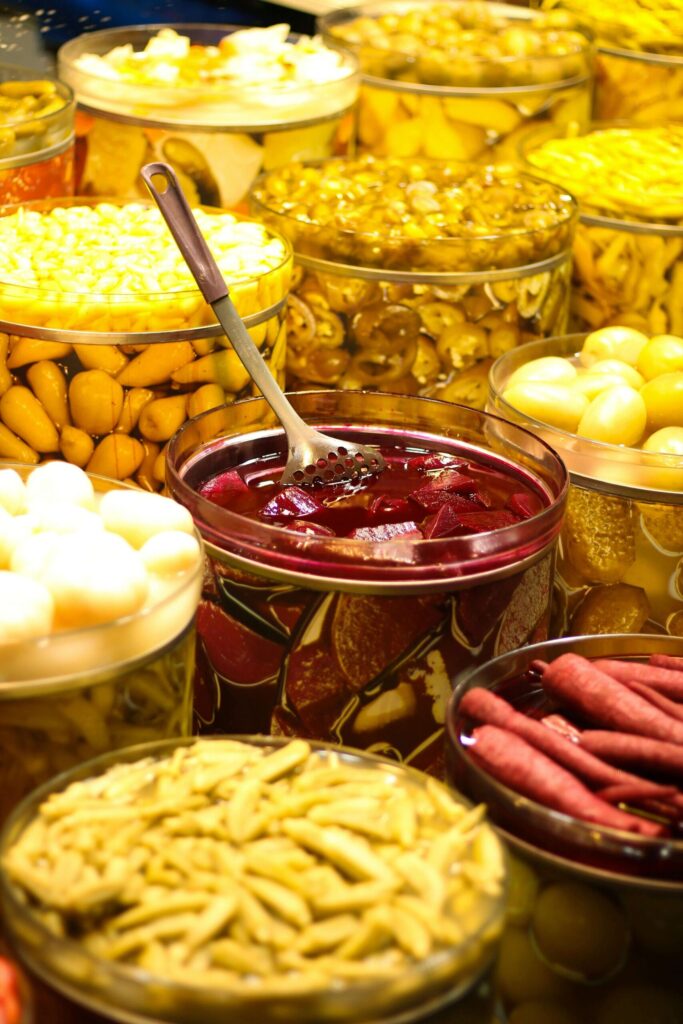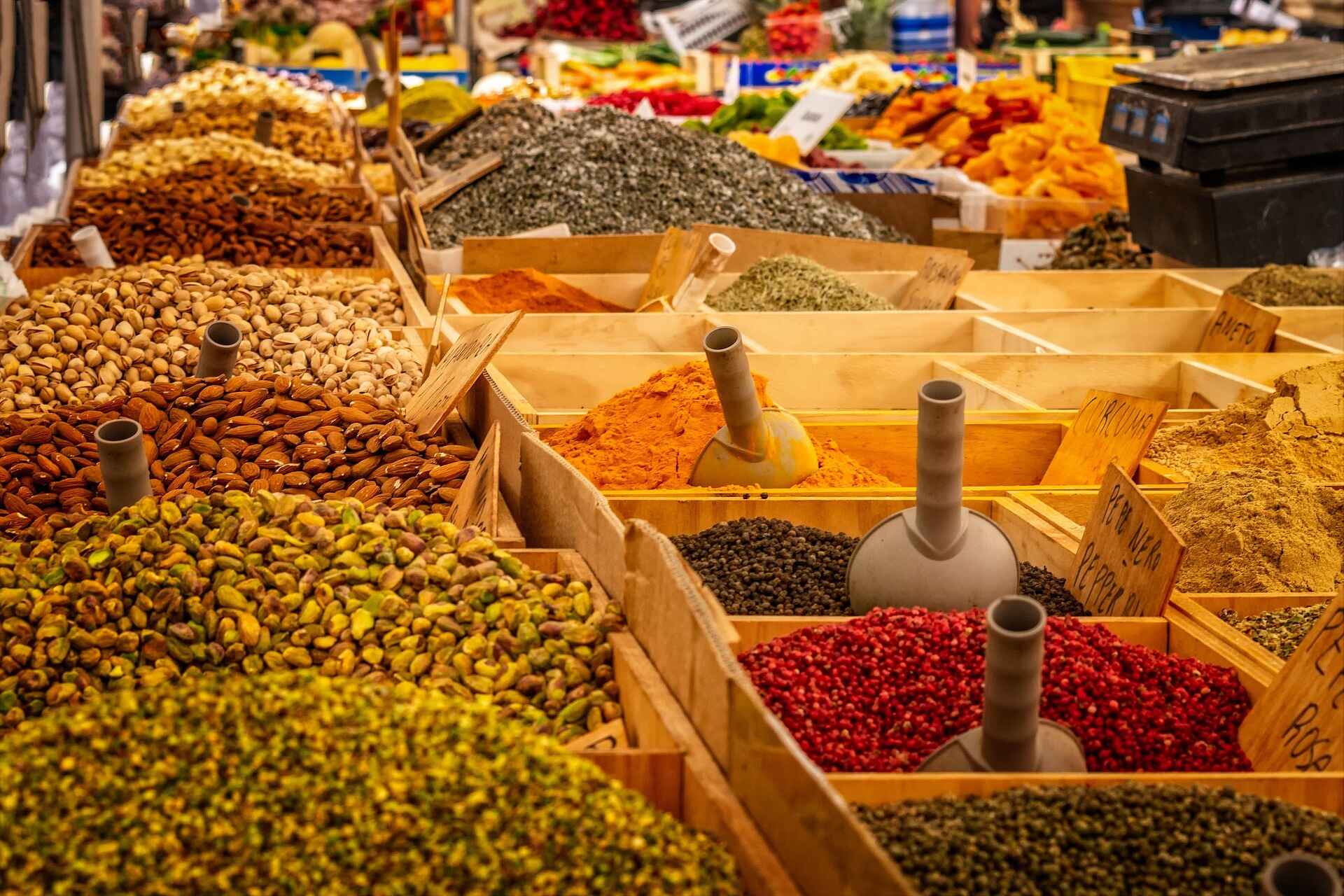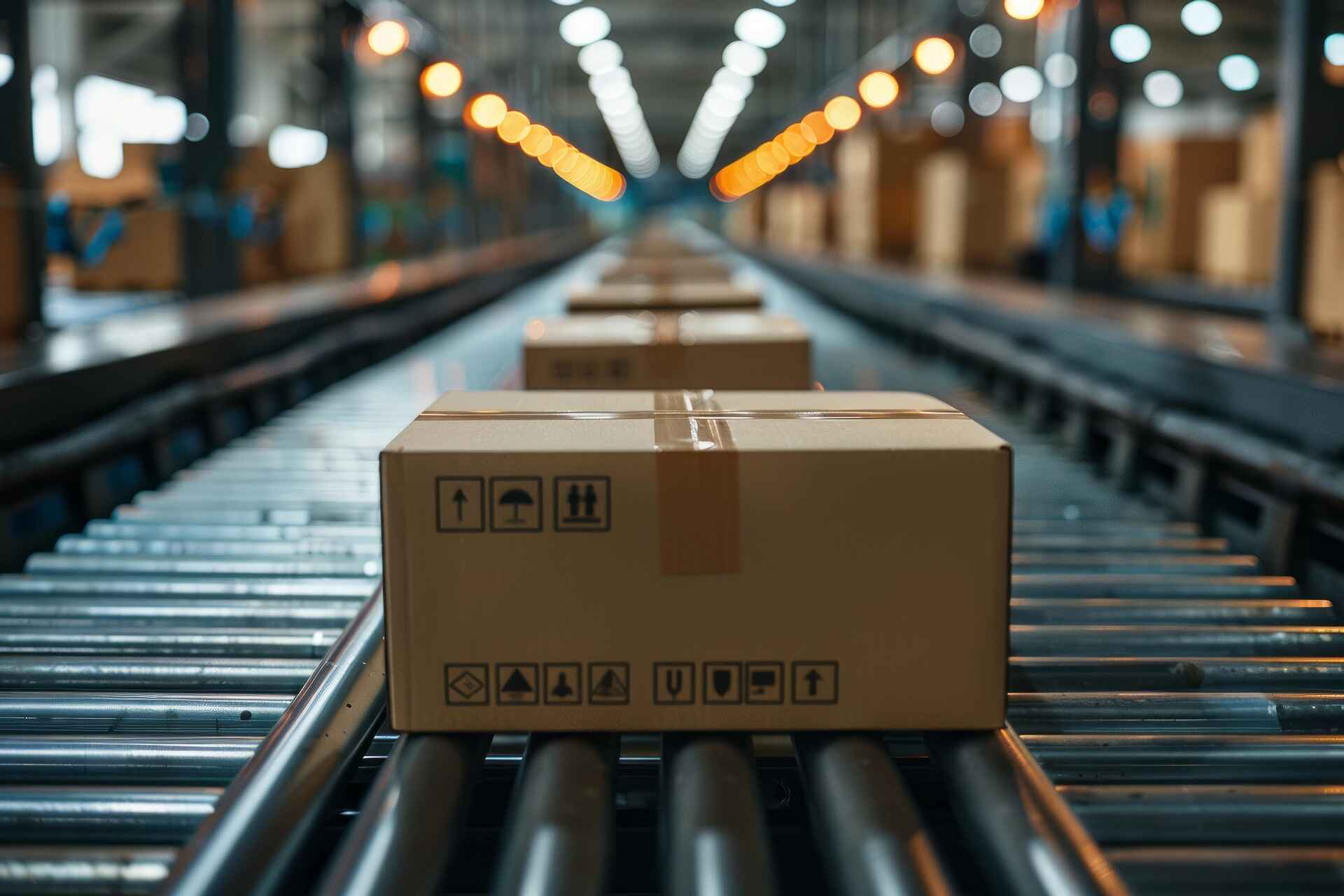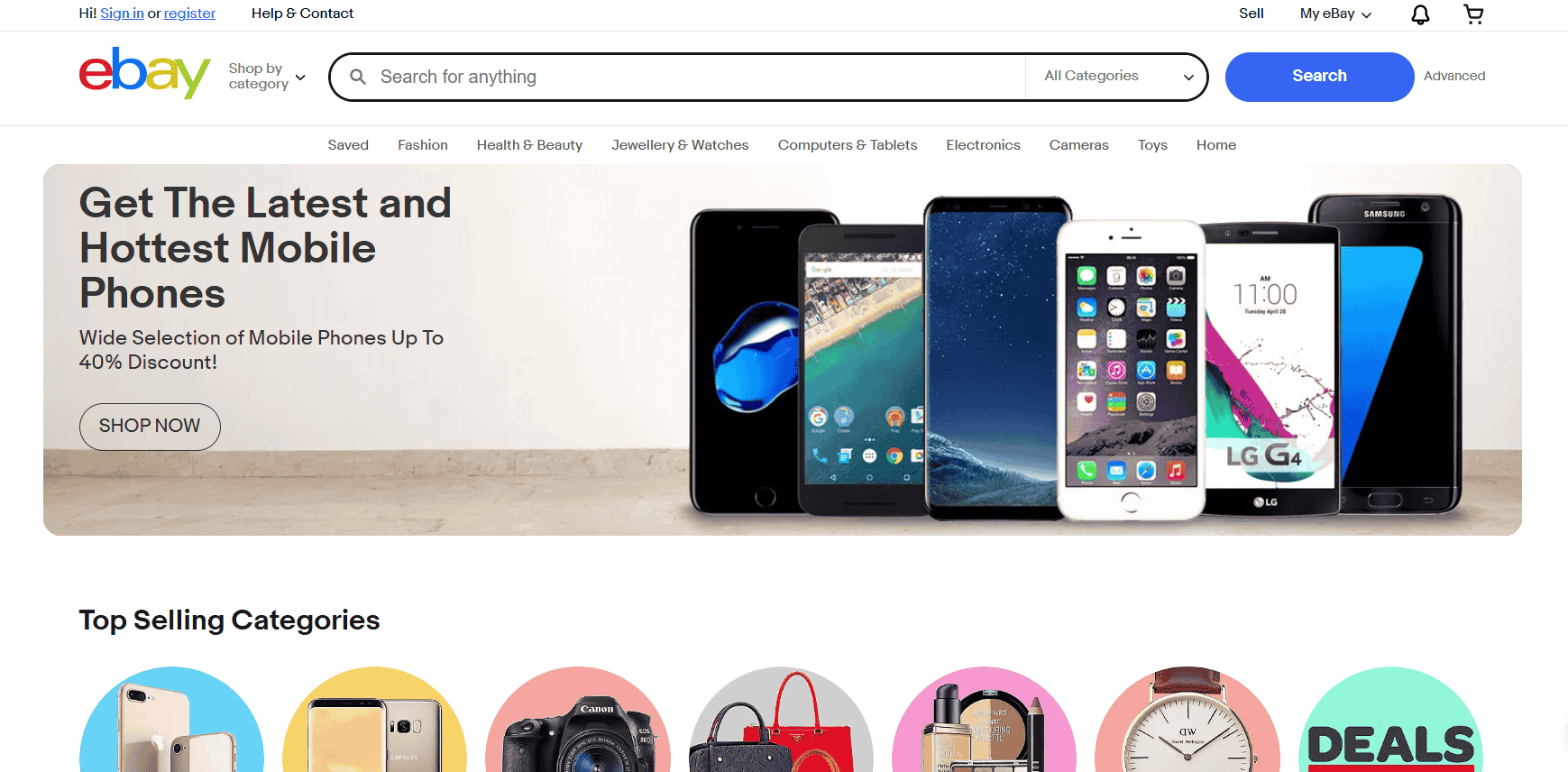Selling food online in the U.S. opens up an incredible opportunity to turn your love for cooking or baking into a profitable business. Every day, millions of people scroll through their phones looking for something new to taste, something that brings comfort, excitement, or nostalgia.
They’re not just looking for mass-produced snacks from grocery chains. They’re hunting for bold flavors, unique textures, and stories behind the food they buy.
Whether it’s your family’s signature hot sauce or that banana bread recipe your neighbors beg for during the holidays, there’s real demand for it online.
You can build a strong brand around food because it creates instant connections. Shoppers remember the cookie that reminded them of their grandmother’s kitchen or the spice mix that turned their average weeknight meal into something worth sharing.
That kind of emotional pull leads to repeat customers, and that’s where the business grows fast.
-
You need a business license, sales tax ID, and possibly a Cottage Food Permit to legally sell food online in the U.S.
-
Low-risk foods like cookies and spice blends are the easiest to start with due to simpler legal and safety requirements.
-
Proper labeling, including allergen info and ingredient lists, is essential to meet FDA and state regulations.
-
Choosing the right sales platform—Shopify, Etsy, Amazon, or social media—depends on your product type and audience.
-
Staying compliant with food safety rules, permits, and documentation builds customer trust and protects your business.
Before you start packing orders or announcing your launch on Instagram, you need to know exactly what it takes to sell food online legally in the U.S. There are federal guidelines, state-specific rules, and local permits to consider.
You’ll also need to think about safety regulations, proper labeling, and where you’re allowed to ship. It’s not overwhelming once you break it down, but skipping any step could get your store flagged or shut down.
I’ve worked with food sellers who had amazing products but stalled because they didn’t take the time to research cottage food laws or apply for the right license. It’s avoidable.
The key is preparation, understanding the legal landscape before you invest in packaging or advertising. That way, when the orders start coming in, you’re ready to deliver more than just good food. You’re ready to run a solid, legally compliant business that can scale.
Why Sell Food Online Instead of Traditional Online Products?
Selling food online gives you access to a huge market that’s growing faster than most people realize. According to Statista, online food and beverage sales in the U.S. are projected to reach over $47 billion in 2025.
That figure has nearly doubled compared to where it stood five years ago. More people are ordering snacks, sauces, baked goods, and full meal kits right from their phones while watching TV or scrolling through Instagram.
Food sells differently from most products. It sparks emotion. A phone case might solve a practical need, but a rich chocolate cookie or a tangy hot sauce triggers memories. People taste your product, and the experience lingers.
They share it during parties, bring it to work, gift it on birthdays, and sometimes even build routines around it. That’s the kind of loyalty traditional online products rarely inspire.
I’ve sold digital content, physical merchandise, and food online, and food moved the needle faster than anything else. When I started testing homemade snacks on Gumroad and Etsy, I noticed something within the first few weeks.
My conversion rates for food items were almost twice as high as they were for digital downloads.
People would reach out to ask questions, tell me how a recipe reminded them of home, or send pictures of their kids enjoying what they ordered. That level of engagement didn’t happen with ebooks or printables.
There’s something about food that invites curiosity. You’re not just offering a product; you’re inviting someone to try a piece of your story.
Whether it’s heritage-inspired spice blends or allergy-friendly treats, food connects with people quickly, and that connection leads to repeat business, referrals, and reviews that actually mean something.
Selling food online gives you the chance to create a brand that people talk about at dinner tables. That’s powerful. And it’s one of the biggest reasons I kept going in that direction.
How to Start an Online Food Business in the USA?
Here’s how to sell food online in the US without losing sleep over compliance. Starting an online food business might feel overwhelming at first, but once you break it down into manageable steps, it becomes far more doable.
Each part of the process builds on the next. You’re creating something real, something people will taste, share, and come back for.
1. Choose your niche wisely.
Picking a niche makes everything easier, from packaging to marketing to compliance. Focus on food items that reflect your personality, skills, or culture.
Think cookies made from your grandmother’s handwritten recipe, vegan snacks with a modern twist, infused honey sourced from local beekeepers, dehydrated fruit for hikers, or spice kits tailored to global cuisines.
These products don’t need refrigeration, which simplifies your logistics. A strong niche helps you stand out in a crowded space, especially when your story is baked into the product.
2. Validate your idea.
Before investing in ingredients, branding, or a domain name, see if people actually want what you’re planning to sell. Head to Google Trends and look at how search interest has shifted over time. Browse Amazon reviews to find what buyers love or complain about in similar products.
Scroll through Reddit threads to find niche communities talking about gluten-free baking, regional hot sauces, or DIY health snacks. Real feedback from real people will save you from building something nobody’s asking for.
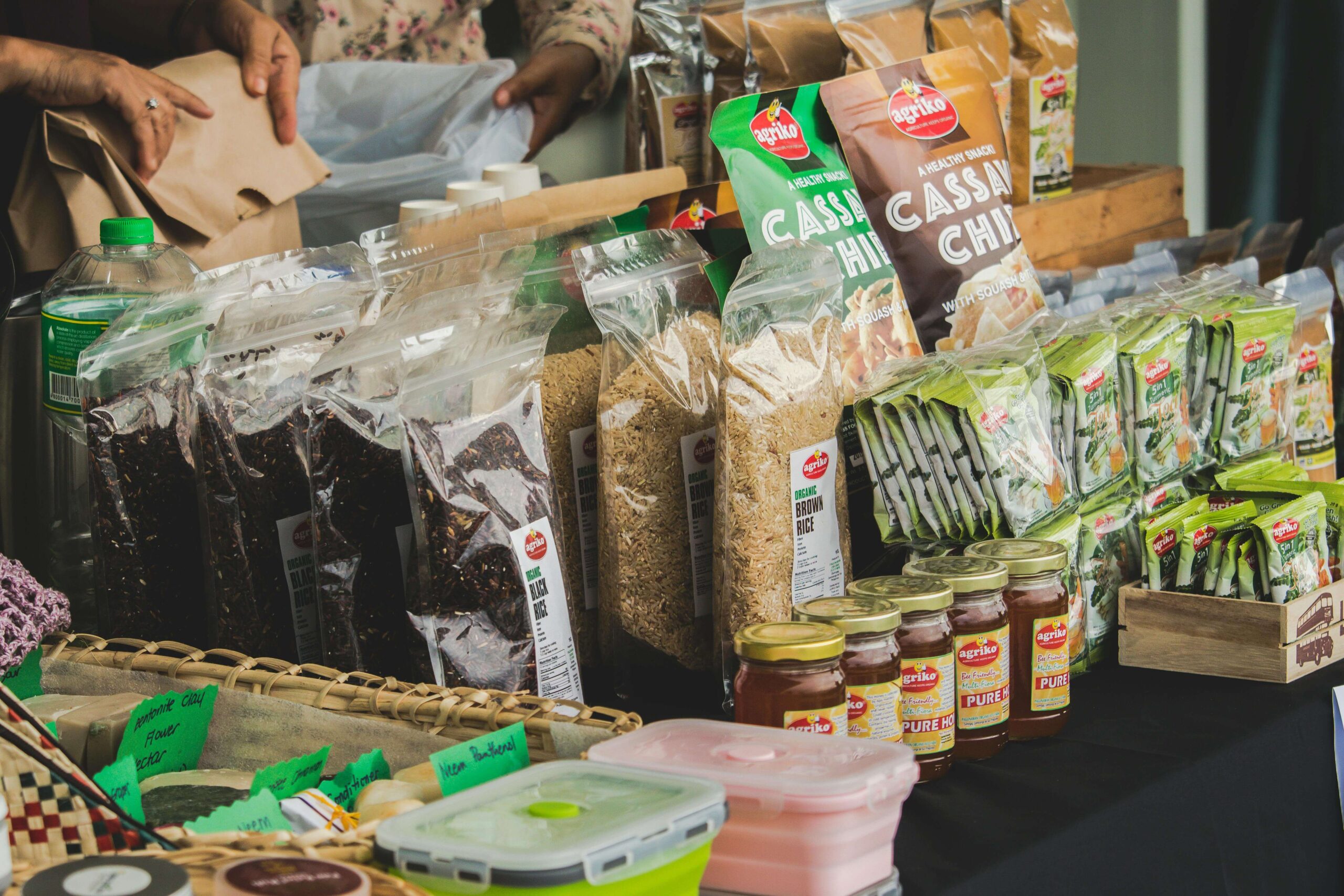
3. Pick your sales channel.
Your product and goals will determine the best place to sell food online. Shopify gives you full control over branding, design, and the customer experience. You’ll also need to handle fulfillment, but that’s a fair trade-off for the flexibility.
Etsy is great for small-batch or handcrafted food, especially if your items feel personal or artisanal. Amazon gives you access to massive traffic, but you’ll need to meet their specific food safety and packaging requirements. Start where your audience already shops.
4. Get legal.
This step matters more than any logo or label design. You’ll need a business license, sales tax ID, and possibly a Cottage Food Permit or health department clearance depending on your state.
Some food products also require FDA registration, especially if you plan to ship across state lines or make claims like “sugar-free” or “low sodium.”
Don’t guess on this part. Call your local health department, and write everything down. Legal peace of mind means you can focus on growing your business instead of worrying about inspections or shutdowns.
5. Prep for food safety.
Cleanliness, proper storage, and careful handling are the backbone of any food business. Even if you’re making cookies in your home kitchen, you need to separate work areas, use food-safe containers, and document expiration dates.
Track your ingredients from purchase to production so you can respond quickly to any customer questions or safety concerns. It also helps build trust when you’re transparent about your process.
6. Build your brand.
Packaging isn’t just there to look pretty. It protects the product, keeps it fresh, and provides all the legally required information, like ingredients, allergens, and your contact details. Great branding also creates recognition and loyalty.
I once printed labels at home using kraft paper and a basic logo, and customers messaged me about how “authentic” it felt. The look and feel of your packaging sets the tone for your business.
7. Test and improve.
Before going live with an online store, start small. Sell your product at a local farmer’s market, hand out samples to coworkers, or run a limited-time presale to your email list.
You’ll learn a lot from how people respond: what they say, what they ignore, and what they come back to buy again. Those insights will help you fine-tune everything from price points to flavor options before you scale up.
This process is meant to give you momentum, not hold you back. Selling food online in the US becomes a lot smoother once you’ve nailed the basics. Starting strong sets you up for long-term growth.
Do I Need a License to Sell Online in the USA?
Yes, and skipping this step can shut your business down overnight. No matter how great your product is or how many followers you’ve got on TikTok, selling food online in the US without the proper license puts your entire business at risk.
You could face fines, get delisted from marketplaces like Etsy or Amazon, or be forced to shut down by your local health department. It’s not worth the gamble.
Most states require a basic business license just to sell anything online, even if you’re only selling from home or through social media. When it comes to food, there are extra layers because you’re dealing with something people are putting into their bodies. Safety and accountability matter.
Here’s what you’ll typically need:
A sales tax permit
This allows you to collect and submit sales tax legally. Some states don’t charge tax on food, but many still require the permit, especially if you’re selling non-edible add-ons like branded merch or bundles.
A business license or DBA (Doing Business As)
This registers your food business under a legal name, even if it’s just you in your kitchen. It also protects your personal assets if something goes wrong.
A food handler’s certificate
Required in many states for anyone preparing or packaging food, even at home. You can usually get this online by completing a short course and passing a quiz.
Each state has its own rules. In California, for example, home food sellers must apply through the state’s Cottage Food Law program and register with their county health department.
You can sell directly to consumers as long as you follow the permitted foods list, label everything properly, and renew your registration yearly.
Florida takes a slightly different route. The state allows cottage food operators to work without a kitchen inspection as long as they stick to non-hazardous food types and follow clear labeling rules.
That means you can legally sell items like bread, cookies, and jams without having a health official visit your home, provided you follow the exact wording and layout required on your labels.
Some states require water testing if you’re on a private well. Others have restrictions on shipping across county lines. I’ve even seen local towns within the same state apply slightly different zoning rules, especially when you’re preparing food from home.
Your best bet is to visit your state’s Department of Agriculture website or call your county health department directly. I’ve done this myself, and while it takes a bit of time, the clarity it gives is worth it.
Having the right license means you’re building your business on solid ground. You’re protected, you’re taken seriously, and you’re legally allowed to grow.

Do You Need a Permit to Sell Food in the US?
Yes. Even for low-risk foods like cookies, muffins, or trail mix, most states require a Cottage Food Permit or something similar. This permit allows you to legally make and sell food from your home kitchen, but only if you follow strict rules.
These rules often include using specific types of ingredients, limiting sales to direct-to-consumer, and following labeling laws down to the font size.
A Cottage Food Permit helps the state know what you’re making, how you’re making it, and whether your process meets basic safety standards. It also gives customers a level of trust. They know you’ve gone through the proper steps and aren’t just winging it in your kitchen.
Beyond the Cottage Food Permit, there are other types of permits that might apply, depending on what you’re selling and where you’re selling it:
Home Occupation Permit
If you’re operating a business out of your home, some cities or counties require this additional permit. It clears you with local zoning laws and ensures your neighbors won’t have reason to file complaints.
Health Department Permit
This one’s usually required when you move beyond home-based food prep and step into a commercial kitchen. It applies to higher-risk foods, like those that need refrigeration, or any product with meat, dairy, or seafood.
Food Establishment License
Commonly issued to brick-and-mortar businesses, ghost kitchens, or mobile vendors. If you’re prepping full meals, cold drinks, or hot foods for delivery or resale, you’ll likely need this.
Zoning Approval
Some residential areas restrict or limit home businesses, especially when there’s traffic, deliveries, or customer pickups involved. Getting the green light from your city’s zoning office avoids problems down the road.
Documentation isn’t just a formality. It’s your proof that you’re operating legally. Keep printed and digital copies of every license or permit. Some states even require water testing if your kitchen runs on a private well, which is a step many first-time sellers overlook.
I once helped a friend launch her cookie business in a rural county, and she was shocked when they asked for water safety records. Luckily, we caught it early before any inspections.
More than just paperwork, permits are protection. For you, for your customers, and for the business you’re trying to grow. Taking the time to understand your state’s requirements saves you from headaches, fines, or forced shutdowns later.
It also makes your business feel real. That confidence shows in everything you do, from your packaging to how you promote your products online.
How to Sell Food from Home in the USA?
Start with your state’s Cottage Food Laws. These laws are designed to help small food entrepreneurs like you launch from home without having to rent an expensive commercial kitchen.
Each state has its own list of approved foods, but most allow you to sell low-risk items that don’t need refrigeration.
These include cookies, cakes without cream-based fillings or frostings, dried herbs and tea blends, granola and trail mixes, and jams and jellies made with high-acid fruits (like strawberries or citrus)
These kinds of foods are easier to store, cheaper to produce, and simpler to package. That’s why they’re popular starting points for people figuring out how to sell food from home in the USA.
To keep your workspace compliant, set up a kitchen space that’s clean, organized, and separate from your personal cooking. Use food-grade storage bins and label every container clearly.
Many states require that you prep and store ingredients away from pets or small children, which might mean using gated kitchen access or dedicating certain hours of the day to production.
Labels are another major piece. You’ll need to follow your state’s format closely and include the following on every package:
- The product name (clear and specific)
- A full list of ingredients in descending order by weight
- Allergy information for common allergens like nuts, dairy, eggs, or wheat
- The net weight of the product (in ounces or grams)
- Your business name and full address (some states allow a registration number instead)
The label also needs a disclosure like “This product was made in a home kitchen not inspected by the Department of Health” or similar wording, depending on your state.
Some states allow you to sell food from home through websites, Facebook pages, or local delivery services. Others are more strict and only allow in-person sales at farmer’s markets or community events.
For example, Texas permits direct sales through mail, as long as you follow Cottage Food labeling laws. Meanwhile, Illinois requires face-to-face transactions unless you upgrade your license.
I once worked with a home baker who didn’t realize her state didn’t allow online orders until she was a month into her launch.
She had to pause everything and shift to pop-up markets instead. It was a tough lesson, but a good reminder: check your local laws before you start shipping anything.
Selling food from home in the USA is one of the most accessible ways to enter the food business. But it only works if you treat it seriously and play by the rules.
When your setup is clean, your labels are correct, and your products follow state guidelines, you’re ready to sell with confidence, and that’s when the orders really start to roll in.
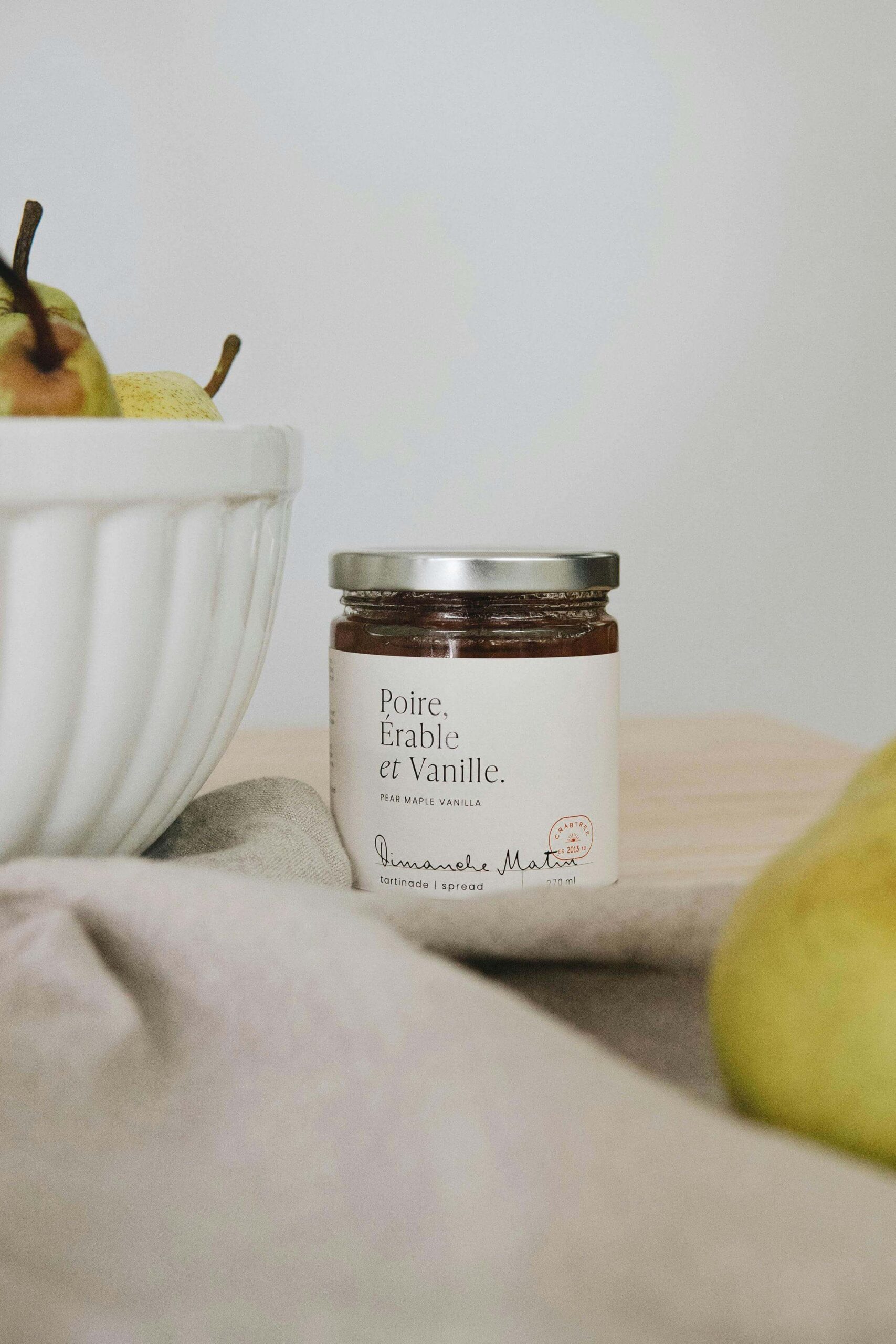
Types of Food You Can Sell Online
You can legally sell thousands of food items online in the U.S., but not all of them fall under the same set of rules.
The license or permit you’ll need depends on how your product is categorized from a safety standpoint. The more perishable or potentially hazardous the food is, the stricter the regulations will be.
Low-Risk Food
Also called non-potentially hazardous foods, these are generally approved under most state Cottage Food Laws. These are the items that don’t need refrigeration and have a very low chance of causing foodborne illness when made and handled properly.
These are the easiest foods to sell from home because the legal requirements are lighter and more accessible. Some examples of low-risk, Cottage Food–approved items include:
- Baked goods like cookies, brownies, and muffins (without cream fillings)
- Hard candy, brittle, and chocolate bark
- Dry tea leaves, coffee beans, and herbal blends
- Dried fruits and fruit leather
- Honey in states where it’s exempt from commercial processing rules
These foods travel well, store easily, and tend to have long shelf lives. They’re perfect for beginners who want to sell food online legally without jumping through dozens of regulatory hoops.
Higher-Risk Foods
These items either require temperature control, have a higher chance of bacterial growth, or contain ingredients regulated more closely. You’ll need access to a commercial kitchen and more extensive permits or certifications to sell these legally.
Common examples of higher-risk foods include:
- Anything with meat or poultry, like frozen meals or sausages
- Seafood-based products like crab cakes or fish dips
- Dairy items such as cheese, yogurt, or creamy desserts
- Sauces that have low acidity, like garlic oil or homemade pesto
- Refrigerated products, including salads, prepared meals, or meal kits
These foods must be produced in a licensed, inspected facility. Some also require Hazard Analysis and Critical Control Points (HACCP) plans, depending on your state and distribution method.
The FDA and USDA split the oversight of these categories.
For instance, when you sell jerky online, you’re entering USDA territory because it’s a meat-based product. That means you’ll need to follow federal rules in addition to state laws, and that includes regular inspections and traceability systems. It’s doable, but it takes a lot more planning.
Knowing what you’re allowed to sell helps you avoid costly mistakes. I once consulted for someone trying to sell cheesecake from home. It was delicious (no doubt about that) but they didn’t realize it was classified as a potentially hazardous food.
Their state required commercial refrigeration, labeling approval, and a full health inspection. That stalled their launch by six months.
Starting with a low-risk product helps you build momentum. Once you get comfortable and your sales start to grow, you can explore moving into more complex categories.
Just make sure you’re fully licensed for whatever you’re putting into your customer’s hands, and eventually, into their mouths.
Documents You Need to Prepare Before Selling Food Online
Before you start accepting orders or designing your packaging, get your paperwork in order. Having the right documents ready doesn’t just keep your online food business legal.
It also makes you look credible and professional to customers and potential partners. These aren’t just formalities. These are the foundation of your operation.
Here’s what you’ll need:
Business license (state/city)
This is your official green light to operate. Whether you’re baking out of your kitchen or renting a shared space, a business license makes your venture legal in the eyes of your state or local government.
Cottage Food Permit or Health Permit
If you’re selling low-risk food from home, the Cottage Food Permit is usually what you’ll need. If you’re working with high-risk items or using a commercial kitchen, you’ll likely need a Health Department Permit instead.
Food Handler Certification
Many states require you to complete a basic food safety course, even if you’re the only one in the kitchen. It covers essential practices like proper handwashing, safe food storage, and contamination prevention.
FDA Registration
This applies if you’re selling food across state lines or manufacturing items that fall under federal oversight. For example, anything that involves shelf-stable sauces, dietary claims, or packaged items sold wholesale may trigger FDA registration.
Sales Tax ID
Also called a seller’s permit. This lets you collect and remit sales tax. Some states tax certain foods, while others don’t. Either way, registering for a Sales Tax ID is a standard step for online sellers.
Liability insurance policy
This protects you if a customer has a reaction to your product, files a claim, or demands compensation. Even if you’re working out of your home, a basic liability plan can save you thousands in legal fees.
Product labels with ingredients and allergens
Labels must follow both state and federal guidelines. That means listing every ingredient in descending order by weight, disclosing allergens clearly, and including your business name and address.
Labeling mistakes can lead to serious trouble. In 2023, the FDA recalled over 150 food products because of mislabeling and undeclared allergens.
That number isn’t an exaggeration. It’s pulled directly from the FDA’s public recall database. One missing word or an incorrect ingredient order can trigger a recall, a flood of customer complaints, and even legal action.
I’ve seen new food sellers pour their hearts into perfecting a recipe, only to rush the label and get flagged within weeks.
Creating a compliance checklist helped me avoid that mistake in my own business. Every time I updated a recipe or redesigned my packaging, I ran through that list like clockwork.
Covering the legal side may not be the most exciting part of launching your food brand, but it’s one of the smartest. When your documents are solid, you can focus on what actually moves the needle: building trust, growing sales, and turning customers into repeat buyers.

How to Choose the Type of Food to Sell
Choosing the right product to sell online is one of the most important decisions you’ll make. It sets the tone for your branding, your pricing, your packaging, and even how much sleep you get when orders start rolling in.
It’s easy to fall in love with your favorite recipe and assume others will love it too. But building a successful online food business means looking beyond personal taste.
Start with questions that help you think like a seller. Demand should always lead the conversation. Are people actually searching for this type of food? Is there a trend behind it? Can you tap into a craving people already have?
I remember seriously thinking about selling fresh pasta online. I loved making it, friends raved about it, and it felt like a “signature” product. But the logistics were brutal. Cold packs, special shipping windows, unpredictable delays. It was all too much.
So I pivoted to something more practical: dry spice blends. They didn’t require refrigeration, traveled well, and had a much longer shelf life. On top of that, I could make large batches in advance without stressing about spoilage.
You want a product that fits your life and your skillset, but also works on a business level. Ask yourself:
What dietary trends are gaining traction?
There’s growing demand for keto snacks, vegan treats, low-FODMAP baked goods, and gluten-free alternatives. These niches have dedicated communities who are constantly looking for new options.
What’s missing in your region or niche?
A small gap in your local market could be a big opportunity. Maybe there’s no one selling plant-based candy, or no one’s offering Filipino sauces with clean labels.
Can your product survive a 3-day shipment?
Shipping matters more than you think. Products that melt, spoil, or get crushed easily will cost more to package and bring more headaches.
Is it easy to scale once demand grows?
Making one batch is fine. But can you make 20 in a day without sacrificing quality? Products that require less per-order customization are usually easier to scale.
To really understand where demand is headed, use tools like Google Keyword Planner or browse Amazon Best Sellers in your category. You’ll get a sense of what people are searching for, how saturated the space is, and what price points are working.
Great ideas are everywhere, but great execution depends on choosing a product that works in the real world. The sweet spot is finding something people already want, that you’re excited to make, and that won’t eat up your time and money every time an order comes in.
Where to Sell Food Online
You have more options than ever before when it comes to choosing where to sell food online. The best platform for your business depends on your product, your audience, and how much control you want over the buying experience.
Shopify
This platform gives you full control from start to finish. You can design your site, customize your checkout flow, and install apps for food subscriptions, bundles, or repeat orders. It’s great for sellers who want to build a brand that feels polished and independent.
You’ll handle more of the backend work, like setting up payment gateways, managing shipping rates, and integrating with email tools, but that work pays off in the long run.
I’ve used Shopify for both physical products and digital goods, and I always felt like I was building something that belonged to me, not just riding someone else’s traffic.
Etsy
This works beautifully for small-batch and handmade food products. It already attracts shoppers who want unique, thoughtful gifts, so it’s ideal for things like artisan cookies, flavored salts, herbal teas, or homemade jams.
You can set up a shop quickly, and Etsy’s built-in audience gives you organic exposure early on. Their search algorithm also rewards well-written listings with great photos, so a little effort on presentation goes a long way.
Amazon
This platform reaches millions of shoppers every single day. That kind of exposure is hard to beat, especially for packaged goods with longer shelf lives. The catch is compliance. Amazon has very strict requirements when it comes to food handling, storage, labeling, and even packaging materials.
You’ll need to apply as a grocery seller and pass their approval process before you can list food. For sellers who want to scale fast and tap into national demand, it can be worth the effort.
Facebook and Instagram Shops
These are ideal for connecting with your local audience and driving impulse purchases. You can showcase your products in reels, live videos, or behind-the-scenes posts, and your followers can buy directly from your page without leaving the app.
Social selling works especially well for weekend promos, seasonal treats, or limited-edition launches.
Some states even allow you to partner with Uber Eats or DoorDash for hyperlocal food delivery. This works best for perishable items, freshly baked goods, or meal kits.
Customers order through the app, and you fulfill it from your home kitchen or shared kitchen space. It’s a solid option for sellers who want to serve their own city before going nationwide.
Choosing the right platform depends on how hands-on you want to be with marketing and fulfillment. Some sellers prefer owning the full experience with Shopify.
Others love the built-in audience that comes with Etsy or Amazon. Personally, I started small with Etsy and local Facebook groups, then moved into Shopify once I felt confident handling everything myself.
There’s no one-size-fits-all answer. But there is a best fit for your product, your lifestyle, and your customer base. Start where you feel most comfortable, and grow from there.
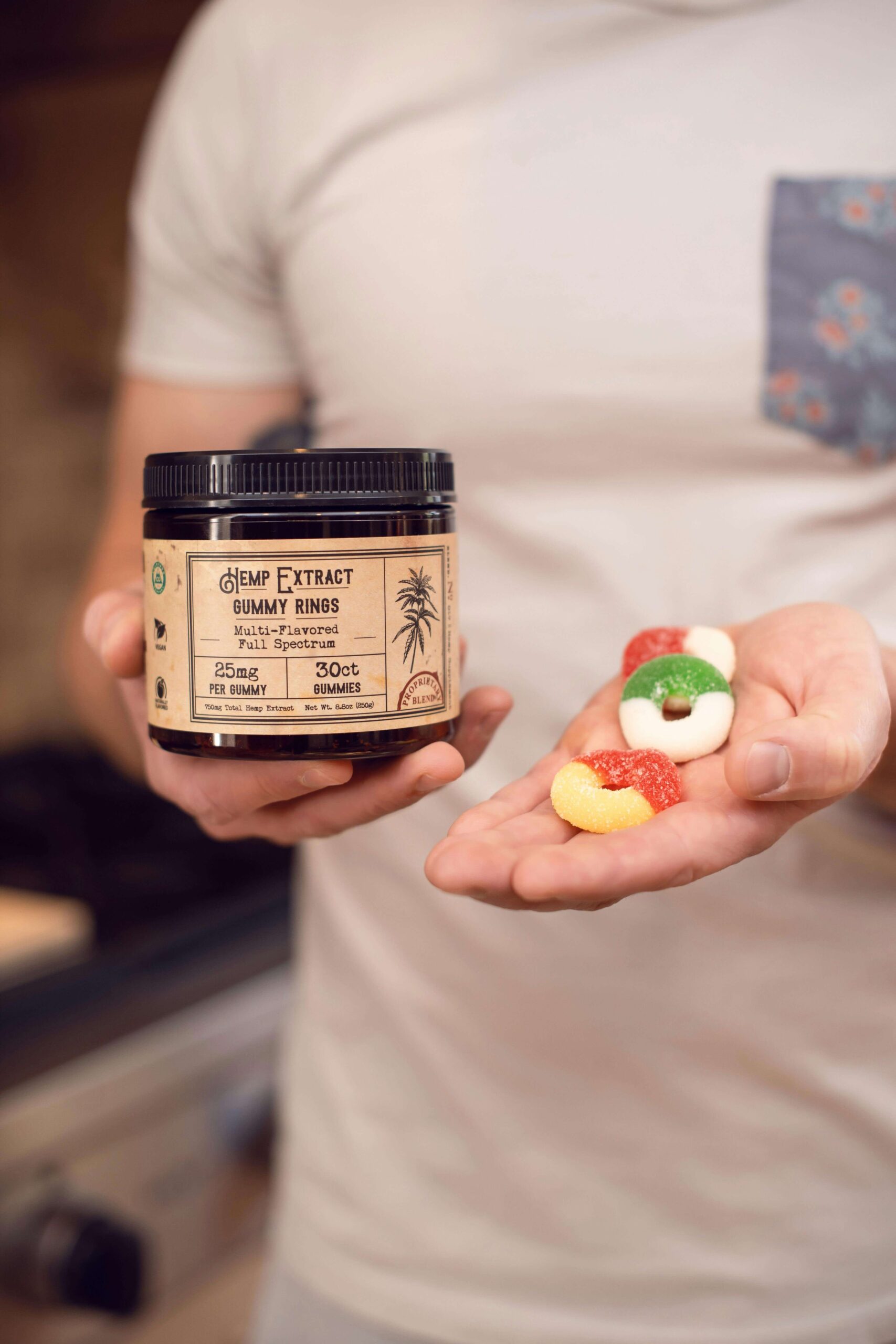
Key Compliance Tips for Selling Food Online
Selling food online in the US comes with big opportunities and big responsibilities.
The good news is that most compliance steps are simple once you know what to focus on. The real challenge is staying consistent as your orders grow. Here are a few essentials that can protect your customers, your business, and your reputation:
Follow FDA labeling standards to the letter
That means listing ingredients in the correct order, using exact wording for allergens, including your business info, and staying clear on net weight and required disclaimers. It’s not optional. It’s what makes your product legit in the eyes of regulators and customers alike.
Use tamper-evident packaging
Whether it’s a sealed bag, a shrink band around a jar, or a sticker across a flap, that extra layer tells buyers your product hasn’t been touched or opened. It adds a layer of trust that’s especially important when you’re just starting out.
Store ingredients safely and track expiration dates
Proper rotation, sealed containers, and labeling by purchase date can save you from accidental spoilage and prevent serious health risks.
Document every batch you produce
Keep records of when and where your products were made, what ingredients you used, and any issues during production. This is your paper trail in case anything goes wrong, and it makes recalls or troubleshooting much easier.
Get product liability insurance
Even if your product is low-risk, accidents happen. Someone could have an allergic reaction or claim your product made them sick. A basic insurance plan covers legal costs and gives you breathing room when things get tough.
One bad review is frustrating. One food safety issue can shut you down. I’ve seen small sellers get pulled from marketplaces after a single misstep, like a missing allergen warning or an unlabeled preservative. You work too hard to let paperwork or packaging be the reason you lose trust.
I’ve worked with hundreds of online sellers, and I’ll say this confidently: selling food online in the US is one of the most rewarding paths you can take, as long as you respect the legal requirements. The size of your kitchen doesn’t matter.
Whether you’re baking three dozen cookies a week or running a full-scale prep kitchen downtown, you’re feeding people. That comes with a level of responsibility that can’t be skipped.
Too many new sellers focus all their energy on making the product look pretty or launching the store fast. Then they run into permit issues, labeling mistakes, or customer complaints that could’ve been avoided.
I’ve had sellers come to me in panic after being flagged by Etsy or reported by a customer. It’s preventable.
Start smart. Learn the laws. Create a checklist. Talk to your local health department. Read the packaging rules twice. These little steps will protect you in ways no marketing strategy ever could.
Building a food brand that lasts doesn’t happen by accident.
It happens when you respect the product, protect the customer, and stay one step ahead of compliance. That’s how you go from a hobby baker to a business owner people trust.

